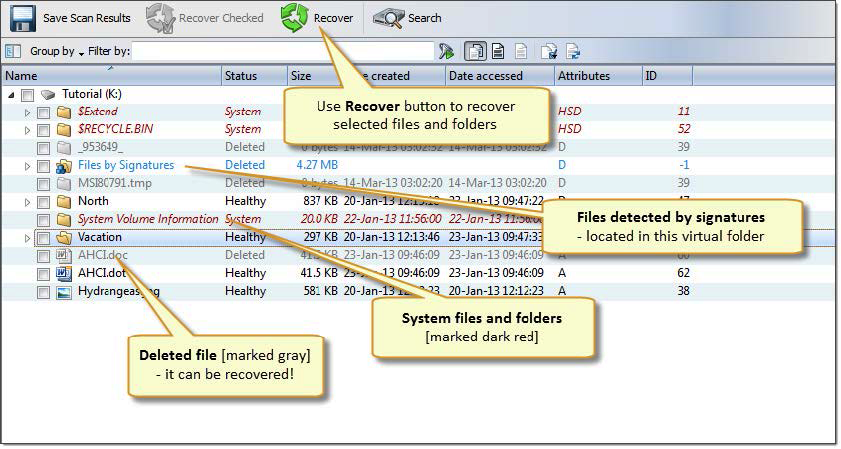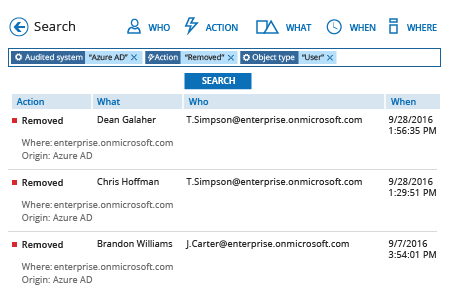

- #SEARCH DELETED OBJECTS IN AD APACHE DIRECTORY STUDIO UPDATE#
- #SEARCH DELETED OBJECTS IN AD APACHE DIRECTORY STUDIO REGISTRATION#
- #SEARCH DELETED OBJECTS IN AD APACHE DIRECTORY STUDIO PASSWORD#
Note: When configuring the connection in ProcessMaker to the LDAP/Active Directory server, it is strongly recommended to use port 389 and not the 636. If you have any trouble with the configuration please report bugs at / The configuration was not tested for ProcessMaker 3.0.x. Note: The TLS connection was tested with version 1.4.22 of the "ldapAdvanced" plugin and the Softerra LDAP Browser 4.5. After changing the Apache configuration file, restart Apache for the change to take effect. This line tells Apache the path of the CA certificate to verify the domain. LDAPTrustedGlobalCert CA_BASE64 /etc/openldap/cacerts/neonet.cer LoadModule ldap_module modules/mod_ldap.soĬreate a TLS connection by adding the following line to the Apache configuration file (which is generally named nf, but is named nf on Debian/Ubuntu systems): LoadModule authnz_ldap_module modules/mod_authnz_ldap.so

The ProcessMaker - Advanced LDAP feature.Access to ProcessMaker Enterprise Edition.PHP version 5.3, 5.4 for ProcessMaker 5.4.The distinguished name describes entities starting from the specific and moving to the general in the hierarchy of entities.įor example: cn=John Doe,ou=managers,ou=regionalbranch,dc=acme,dc=com Requirements Other naming attributes described in RFC 2253, such as o= for organization name and c= for country/region name, are not used in Active Directory, although they are recognized by LDAP. cn - common names, such as: cn=John Doe.ou - organizational units, such as: ou=managers,ou=regionalbranch.dn - domain components, such as: dc=acme,dc=com.In LDAP and Active Directory, which is Microsoft's extension of LDAP, distinguished names are constructed hierarchically using: The Lightweight Directory Access Protocol (LDAP) uses distinguished names (dn) to identify users, groups, and other types of entities.
#SEARCH DELETED OBJECTS IN AD APACHE DIRECTORY STUDIO REGISTRATION#
However, if the option Enable automatic registration is activated, users will automatically be imported from Active Directory the first time they log into ProcessMaker. Users in Active Directory that haven't been imported or synchronized in ProcessMaker will not be created. The Advanced LDAP/AD Sync plugin is used to compare the user list in ProcessMaker to the user list in LDAP or Active Directory. It is strongly recommended to use start-TLS which uses the default port 389 for SSL connections and to have credentials installed in the server environment if required. Note: The usage of LDAPS and its default port 636 is currently deprecated. From ProcessMaker Enterprise Edition version 3.0.1 on, this plugin has become a core feature acquired with the corresponding license. In previous versions of ProcessMaker, this plugin used to be acquired with the Enterprise Manager and the corresponding license.
#SEARCH DELETED OBJECTS IN AD APACHE DIRECTORY STUDIO UPDATE#
Unlike the LDAP community version that only imports users, it also enables synchronization with LDAP or Active Directory to update user information. The Advanced LDAP/AD Sync feature allows ProcessMaker users to login by authenticating directly into a LDAP server or Microsoft Active Directory server.
#SEARCH DELETED OBJECTS IN AD APACHE DIRECTORY STUDIO PASSWORD#
Changing User Password After Importing and Synchronization.Mapping User Information Between Active Directory and ProcessMaker.




 0 kommentar(er)
0 kommentar(er)
